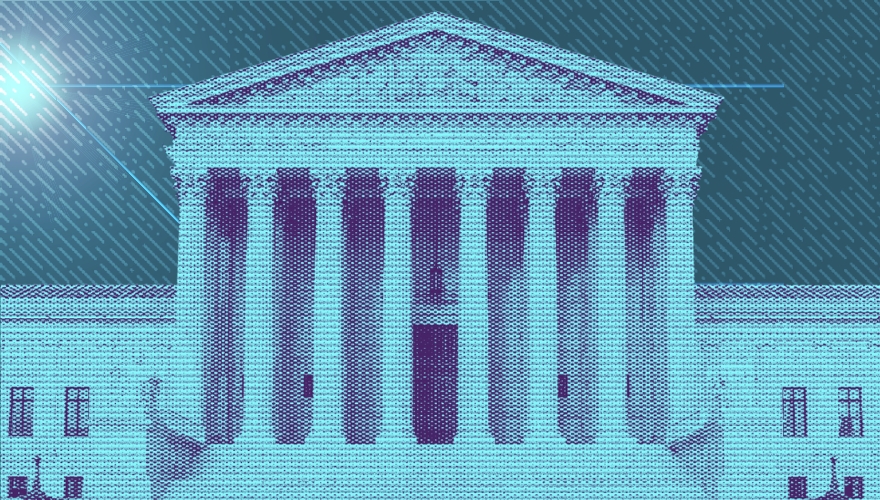The United States Supreme Court struck down affirmative action, saying the practice is a violation of the equal protection clause of the 14th Amendment.
The Court ruled universities and colleges cannot weigh an applicant’s race during the admissions process. The majority of the justices found affirmative action policies “unavoidably employ race in a negative manner, involve racial stereotyping, and lack meaningful end points.”
“We have never permitted admissions programs to work in that way, and we will not do so today,” stated the Court.
Two appeals regarding the constitutionality of affirmative action had been appealed to the Supreme Court – one brought by the University of North Carolina was blocked 6-3 and one brought by Harvard University was rejected 6-2. Justice Ketanji Brown Jackson did not vote on the latter.
The ruling, released on June 29, overturns a previous decision made in Grutter v. Bollinger in 2003. At that time, the Supreme Court found that race could be weighed as a factor in admissions because “universities had a compelling interest in maintaining diverse campuses.”
Chief Justice John Roberts wrote for the majority that both UNC’s and Harvard’s affirmative action programs “lack sufficiently focused and measurable objectives warranting the use of race.”
“At the same time, as all parties agree, nothing in this opinion should be construed as prohibiting universities from considering an applicant’s discussion of how race affected his or her life, be it through discrimination, inspiration, or otherwise,” wrote Roberts. “But, despite the dissent’s assertion to the contrary, universities may not simply establish through application essays or other means the regime we hold unlawful today.”
Roberts said that a student applying to university “must be treated based on his or her experiences as an individual—not on the basis of race.”
“Many universities have for too long done just the opposite,” wrote Robert. “And in doing so, they have concluded, wrongly, that the touchstone of an individual’s identity is not challenges bested, skills built, or lessons learned but the color of their skin. Our constitutional history does not tolerate that choice.”
Justice Clarence Thomas wrote a concurring opinion, noting:“Fundamentally, it is not clear how racial diversity, as opposed to other forms of diversity, uniquely and independently advances Harvard’s goal. This is particularly true because Harvard blinds itself to other forms of applicant diversity, such as religion. It may be the case that exposure to different perspectives and thoughts can foster debate, sharpen young minds, and hone students’ reasoning skills. But, it is not clear how diversity with respect to race, qua race, furthers this goal. Two white students, one from rural Appalachia and one from a wealthy San Francisco suburb, may well have more diverse outlooks on this metric than two students from Manhattan’s Upper East Side attending its most elite schools, one of whom is white and other of whom is black. If Harvard cannot even explain the link between racial diversity and education, then surely its interest in racial diversity cannot be compelling enough to overcome the constitutional limits on race consciousness. UNC fares no better.”
Thomas concluded, “While I am painfully aware of the social and economic ravages which have befallen my race and all who suffer discrimination, I hold out enduring hope that this country will live up to its principles so clearly enunciated in the Declaration of Independence and the Constitution of the United States: that all men are created equal, are equal citizens, and must be treated equally before the law.”
Students for Fair Admissions, a nonprofit legal advocacy group, brought separate lawsuits against UNC and Harvard. The organization argued that race-based admission was unconstitutional and violated the Civil Rights Act of 1964.
“Supporters of racial preferences in admissions prefer to disguise the practice with the words ‘affirmative action,’ which implies a benign helping hand, rather than the ugly reality of bias based on skin color,” SFFA wrote on June 18.
The decision is expected to impact the admissions of K-12 schools and could open the door for challenges to workplace racial diversity programs.
Reactions to the ruing have been mixed.
“This is a great day for America,” wrote former President Donald Trump on Truth Social. “People with extraordinary ability and everything else necessary for success, including future greatness for our Country, are finally being rewarded. This is the ruling everyone was waiting for and hoping for and the result was amazing.”
Trump added that ending race-based admissions “will also keep us competitive with the rest of the world.”
“Our greatest minds must be cherished and that’s what this wonderful day has brought,” he wrote. “We’re going back to all merit-based—and that’s the way it should be!”
Former First Lady Michelle Obama posted a lengthy statement mourning the blow to affirmative action.
“It wasn’t perfect, but there’s no doubt that it helped offer new ladders of opportunity for those who, throughout our history, have too often been denied a chance to show how fast they can climb,” Obama wrote. “So often, we just accept that money, power, and privilege are perfectly justifiable forms of affirmative action, while kids growing up like I did are expected to compete when the ground is anything but level.”
Enforcement of the court’s ruling will now fall to the states.
“It’s important to note that the SCOTUS decision is very narrow,” warned political consultant and author Ryan Girdusky on Twitter. “Only 9 states ban affirmative action. If you’re a state legislator, you should be putting forward a bill to ban it in your state.”
Some state leaders are taking steps to formally ban affirmative action in the wake of the ruling. Missouri Attorney General Andrew Bailey tweeted that he intends “to ensure that the constitutional rights of all Missourians are protected, including those who would be harmed by race-based policies that are unlawful under the rulings issued today.”
He has sent a letter to universities and municipalities in his state, notifying them that “institutions subject to the U.S. Constitution or Title VI must immediately cease their practice of using race-based standards to make decisions about things like admissions, scholarships, programs, and employment.”
“These decisions make also make clear that the Constitution prohibits more than just overt discrimination in application processes,” wrote Bailey. “Also unlawful is adopting a policy that is racially neutral on its face but has the purpose and effect of disfavoring applicants based on race.”

